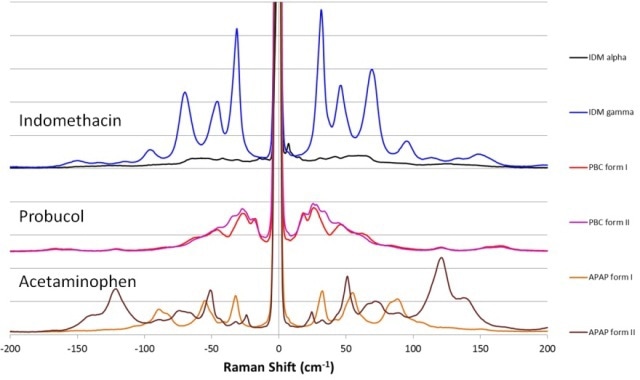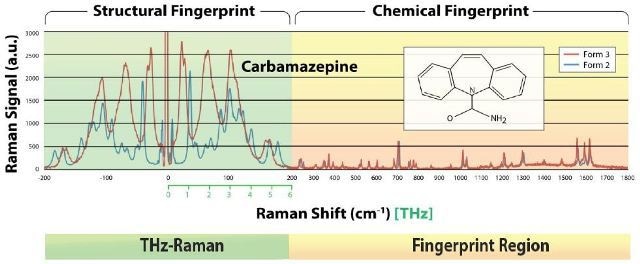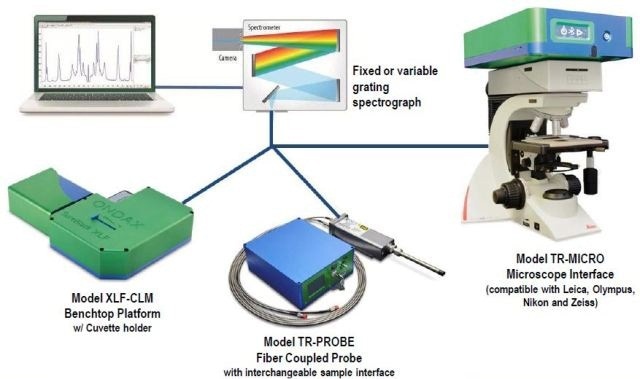Polymorphism is observed in most active pharmaceutical ingredients (APIs), due to the different forms or molecular structures of a compound affecting the efficacy, stability or bio-availability of the drug. These structural changes can occur during formulation, packaging, storage and handling.
Pharmaceutical manufacturers need to identify polymorphs rapidly and reliably in all stages of production, from development to manufacturing and quality control. This article discusses the advantages of THz-Raman® systems over traditional methods to identify polymorphs in pharmaceuticals.

Rapid and reliable identification of polymorphs is critical in pharmaceutical manufacturing
Existing Techniques
Determining structural shifts of a compound can be achieved in many ways, including; Raman spectroscopy, X-ray diffraction (XRD), and Terahertz (THz) spectroscopy. Raman spectroscopy is utilized to monitor small band shifts in the “fingerprint” region (200-1800 cm-1). However, these show subtle shifts in functional groups, and are usually difficult to detect during polymorphic or phase changes.
Quantitative and conclusive analysis can be achieved with XRD techniques, but they need costly equipment and destructive off-line testing to achieve this. While THz spectroscopy can easily differentiate structural shifts, it has limited spectroscopic range, it is costly and moisture-sensitive, and needs special sample preparation.
Coherent Systems
The range of traditional Raman spectroscopy can be extended using THz-Raman® systems. The system extends Raman spectroscopy to the terahertz/low frequency regime, where inter- and intra-molecular structures can be clearly differentiated (Figure 1).
THz-Raman spectra can differentiate raw materials, synthetic pathways, and contaminants, and can also be useful for counterfeit detection and surety testing. Anti-Stokes signals also improve SNR, and add to Raman intensity.
Coherent THz-Raman® systems provide fast, unambiguous differentiation of polymorphs, while preserving the complete Raman “fingerprint region” for chemical identification.

Figure 1. THz-Raman spectra for polymorphs of various APIs showing clear differentiable peaks.
Key Features
The key features and advantages of Coherent systems are as follows:
- Simultaneous structural and chemical analysis
- Quick, reliable polymorph identification, including isomers, conformers, hydrates, and co-crystals
- Helpful for surety testing/counterfeit detection
- Non-destructive, and does not need sample preparation
- Compatible with traditional Raman spectrometers
- Compact, simple, and cost-effective
- Available in benchtop or microscope configurations at 532, 633, 785 and 830 nm
Single System Handles THz-Raman and Fingerprint Region Measurements
Many compounds go through structural changes caused by formulation/processing methods, and environmental conditions. The figure below shows the spectra that displays two polymorphs of carbamazepine (Form 2 and Form 3) (Figure 2).
The THz-Raman range (green background) show clear, differentiating signals, compared to the traditional fingerprint region (gold background), improving the reliability and ease of polymorph identification.

Figure 2. Two polymorphs of carbamazepine (Form 2 and Form 3).
Coherent’s patented THz-Raman® Spectroscopy Systems extend the range of traditional Raman spectroscopy into the THz/lowfrequency regime, exploring the same range of energy transitions as THz spectroscopy, without limiting the ability to measure the fingerprint region. This allows simultaneous analysis of molecular structure, as well as chemical composition for advanced materials characterization.
All THz-Raman® systems are robust, compact, plug-and-play platforms, that offer speed, throughput, and ease of use at an affordable price. With a wide selection of excitation wavelengths from 488 to 1064 nm, a broad range of sample interfaces, and optional polarization control, THz-Raman® solutions can be used for any application.
For more information, download the brochure for the THz-Raman range

Figure 3. THz-Raman® systems showing benchtop, probe and microscope configurations.

This information has been sourced, reviewed and adapted from materials provided by Coherent.
For more information on this source, please visit Coherent.